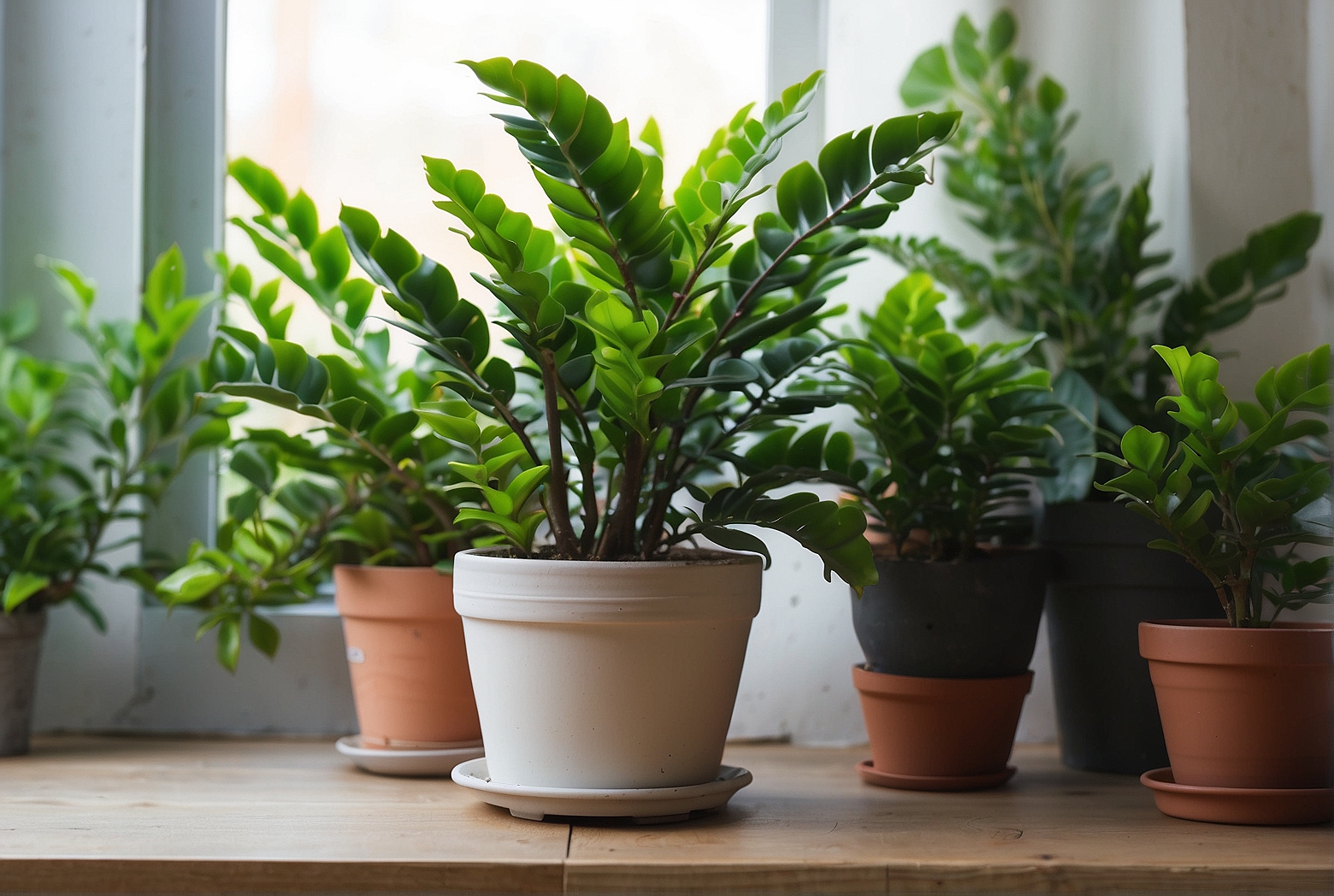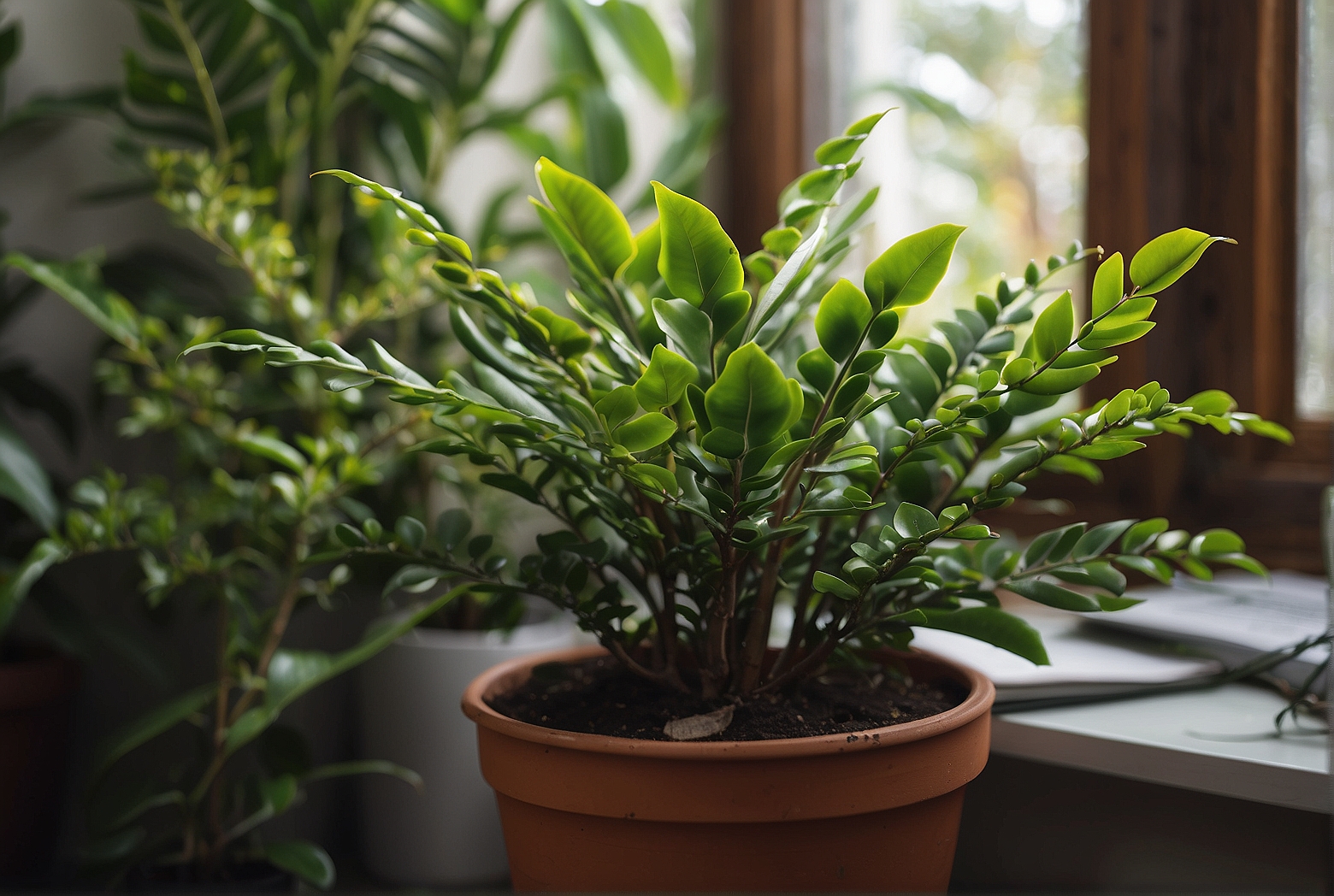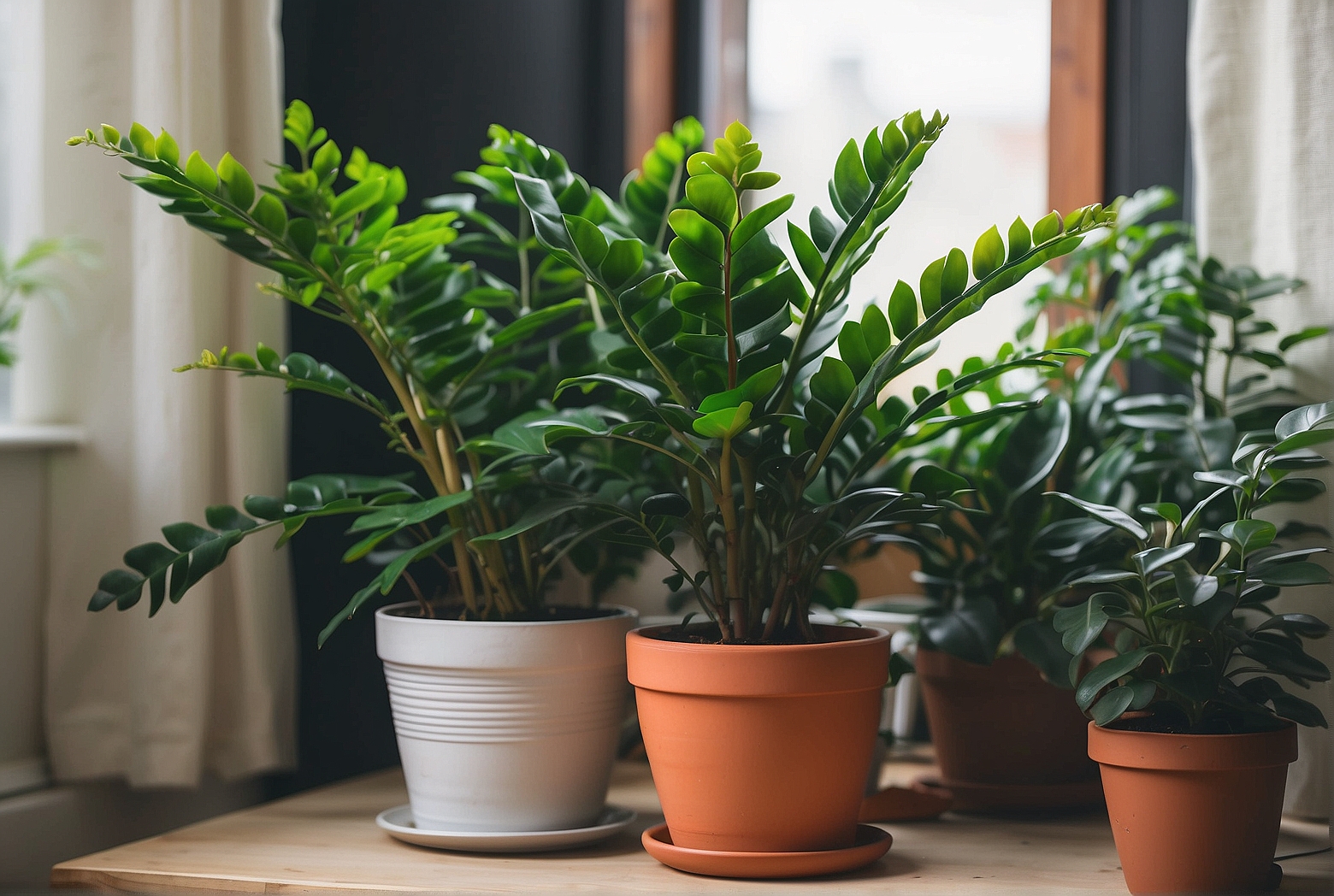Last Updated on April 12, 2024 by Tony Manhart
Have you noticed that your ZZ plant is leaning to one side? Don’t worry, you’re not alone! Many plant enthusiasts have encountered this issue and wondered why their beloved ZZ plant is not standing tall and straight as it should. In this article, we will explore some of the common reasons why your ZZ plant may be leaning and provide helpful tips on how to fix this problem. So, if you want to know how to bring your ZZ plant back to its upright glory, keep reading!
Improper watering
Overwatering
Overwatering is a common cause of a leaning ZZ plant. When you water your plant too frequently or give it too much water at once, the roots may become waterlogged and suffocate. This can lead to root rot, causing the plant to weaken and lean to one side. To prevent overwatering, make sure to let the soil dry out between waterings and only water when the top inch of soil feels dry.
Underwatering
On the other hand, underwatering can also result in a leaning ZZ plant. When you consistently neglect to water your plant or not provide it with enough water, the roots can become weak and unable to support the plant’s upright growth. This can lead to the plant leaning to one side in an attempt to seek out more water. To avoid underwatering, make sure to water your ZZ plant thoroughly whenever the top inch of soil feels dry.
Lack of sunlight
Insufficient natural light
One possible reason for a leaning ZZ plant is the lack of sufficient natural light. ZZ plants thrive in bright, indirect light, and without enough exposure to the sun, they may grow weak and lean towards the nearest light source. To remedy this, try placing your plant near a window that receives bright, indirect sunlight or consider using a grow light to supplement the natural light.

Inadequate artificial light
If your ZZ plant is primarily exposed to artificial light, it’s important to ensure that the light source is adequate for its growth. Insufficient or low-quality artificial light can result in weak and leggy growth, causing the plant to lean. Consider using full-spectrum grow lights specifically designed for indoor plants to provide your ZZ plant with the right amount and quality of artificial light.
Uneven growth
Improper pruning
Improper pruning techniques can contribute to uneven growth in a ZZ plant, ultimately leading to it leaning. If you prune your plant incorrectly by removing too many leaves or cutting off the main stems, it can disrupt the plant’s natural balance and growth pattern. When new growth emerges, it may become unbalanced and cause the plant to lean. If you need to trim your ZZ plant, make sure to follow proper pruning techniques and avoid excessive cutting.
Uneven watering
Inconsistent watering practices can also result in uneven growth and a leaning ZZ plant. If you water your plant irregularly or only focus on one side, it can cause the roots to grow and absorb water more effectively on one side, leading to uneven growth. To prevent this, make sure to water your ZZ plant thoroughly and evenly, allowing the soil to absorb moisture all around.
Lopsided pot placement
The placement of your ZZ plant’s pot can play a role in its growth pattern. If the pot is positioned unevenly on a surface or if it’s constantly leaning to one side due to external factors, such as furniture or uneven ground, it can cause the plant to grow in a lopsided manner. Over time, this can result in a visibly leaning ZZ plant. To counteract this, make sure to place your plant on a stable and level surface to promote even growth.

Root issues
Root rot
Root rot is a common problem that can cause a ZZ plant to lean. Excessive moisture and improper drainage can lead to the roots becoming waterlogged and susceptible to fungal infections. As the roots decay and lose their ability to support the plant, it may start to lean to one side. To prevent root rot, ensure that your ZZ plant’s pot has proper drainage holes and that you’re not overwatering.
Root-bound
If a ZZ plant has been left in the same pot for too long without being repotted, it can become root-bound. This occurs when the roots have grown too densely and become tangled, resulting in limited space and nutrients for the plant to grow properly. As a result, the plant may struggle to maintain an upright position and lean over time. To address this issue, repot your ZZ plant into a larger pot, carefully loosening the roots and providing it with fresh soil.
Pest infestation
Aphids
Aphids are tiny insect pests that can infest ZZ plants and cause various issues, including leaf distortion and stunted growth. If your plant is experiencing an aphid infestation, it may weaken and lean due to the damage caused by these pests. To control aphids, you can use insecticidal soap or a neem oil solution to eliminate them from your ZZ plant.
Spider mites
Spider mites are another common pest that can affect ZZ plants. They are tiny arachnids that feed on the plant’s sap, causing yellowing leaves, webbing, and overall decline in health. As the plant’s vitality diminishes, it may start to lean. To combat spider mites, regularly inspect your plant for signs of infestation and treat with natural or chemical insecticides as needed.
Mealybugs
Mealybugs are small, white, cotton-like pests that often gather in clusters on the stems and undersides of leaves. They feed on the plant’s sap, weakening the overall health of the ZZ plant. As the plant’s vigor declines, it may lean to one side. To get rid of mealybugs, you can use a cotton swab dipped in rubbing alcohol to remove them from the plant or use insecticidal soap or neem oil.
Scale insects
Scale insects are small, oval-shaped pests that often resemble tiny scales or bumps on the plant’s stems and leaves. They can cause leaf yellowing, stunted growth, and even plant decline. As a result, the plant may lean due to the stress caused by these pests. To control scale insects, gently scrape them off using a soft brush or cloth and use insecticidal soap or neem oil for more severe infestations.
Pot size and stability
Inadequate pot size
If your ZZ plant is growing in a pot that is too small for its root system, it can lead to the plant becoming root-bound and eventually leaning. As the roots outgrow their container, they become cramped, limiting their ability to provide proper support for the plant’s above-ground growth. To avoid this, make sure to repot your ZZ plant into a larger pot when necessary, giving the roots ample room to grow.
Unstable or top-heavy pot
The stability of the pot can also impact the growth of your ZZ plant. If the pot is too narrow or top-heavy, it may become unstable and prone to tipping over. This can cause the plant to lean or even fall to one side. To ensure stability, choose a pot with a wide base that can support the weight of the plant and its soil. Additionally, consider using a heavier potting mix that will add weight to the pot, further enhancing stability.
Environmental conditions
High humidity
While ZZ plants are known for their ability to tolerate low humidity, excessively high humidity can negatively impact their growth. High humidity levels can lead to poor air circulation and increased moisture around the leaves, making the plant more prone to fungal diseases. As the health of the plant deteriorates, it may lean as a result. To mitigate high humidity, provide adequate ventilation or consider using a dehumidifier in the room.
Low humidity
Conversely, low humidity can also affect the growth of a ZZ plant. In dry environments, the plant may struggle to retain moisture in its leaves, leading to wilted foliage and weakened stems. As the plant’s condition worsens, it may start to lean. To combat low humidity, you can use a humidifier or place a tray of water near the plant to increase the moisture levels in the air.
Extreme temperatures
Extreme temperatures can take a toll on the health of your ZZ plant, potentially causing it to lean. Too much heat can lead to dehydration and wilting, while extreme cold can damage the plant’s tissue and hinder its growth. It’s important to keep your ZZ plant away from drafty areas, such as open windows or heating vents, and maintain a stable temperature range suitable for the plant’s well-being.
Drafty areas
Drafts can disrupt the growth and stability of your ZZ plant, causing it to lean. Constant exposure to strong winds or air currents can stress the plant and weaken its structure. To protect your ZZ plant from drafts, avoid placing it near windows, doors, or air conditioning units that may cause significant airflow. Instead, choose a location where the plant can enjoy a more consistent and calm environment.
Plant age
Natural leaning as the plant matures
As your ZZ plant ages, it may naturally develop a slight lean due to changes in its growth pattern. This is a normal occurrence and is typically not a cause for concern. The plant may adjust its growth to optimize its exposure to light or adapt to its surrounding space. However, if the lean becomes too pronounced or is accompanied by other signs of distress, it’s essential to assess other potential underlying factors that may be contributing to the issue.
Natural growth habit
ZZ plants naturally lean to seek light
ZZ plants have a natural growth habit of leaning towards sources of light. This behavior allows them to position their leaves optimally to capture as much light as possible for photosynthesis. While some degree of leaning is normal, excessive or unnatural leaning can indicate other issues. If your ZZ plant’s leaning becomes significant or unbalanced, it’s important to investigate if any other factors are affecting its growth.
Multiple stems leading to leaning
Leaning can also occur in ZZ plants with multiple stems. If these stems grow at different rates, one side may become heavier and cause the plant to lean in that direction. It’s important to ensure that all stems receive equal care and attention, including proper watering, pruning, and lighting. By maintaining balanced growth among multiple stems, you can help prevent excessive leaning and promote healthy and upright growth.
Physical disturbances
Accidental bumps or knocks
Physical disturbances, such as accidental bumps or knocks, can cause a ZZ plant to lean. If the plant is frequently brushed against or jostled, it can disrupt its growth pattern and weaken its structure. Over time, this can lead to visible leaning. To prevent this, be mindful of the plant’s location and try to place it in an area where it is less prone to accidental disturbances.
Pets or children playing with the plant
If you have pets or children, they may inadvertently interact with your ZZ plant and cause it to lean. Pets or children playing with the plant’s leaves or stems can damage the plant, leading to a change in its growth pattern. To prevent this, consider placing your ZZ plant out of reach or in an area where it is less susceptible to playful interactions. Additionally, teach children and train pets to respect the plant’s space.
In conclusion, a leaning ZZ plant can be caused by various factors, ranging from improper watering and lack of sunlight to root issues, pest infestations, pot size, environmental conditions, plant age, natural growth habits, and physical disturbances. By understanding the common reasons behind your ZZ plant’s lean and taking appropriate measures to address them, you can help promote healthy, upright growth and ensure the well-being of your beloved plant. Remember to observe your ZZ plant closely, provide it with the care it needs, and make any necessary adjustments to create an optimal growing environment. With your attentive nurturing, your ZZ plant can flourish and proudly display its stunning foliage.
Tony Manhart is a passionate gardener who has been tending to gardens for over 20 years. He takes pride in creating beautiful outdoor spaces with plants, trees, and shrubs that can thrive in any environment. He loves to share his knowledge with others and has taught classes on gardening basics and advanced techniques. He is committed to sustainability, using natural and organic methods to create and maintain gardens. He also works with local organizations to create green spaces for communities. When he’s not gardening, Tony enjoys hiking, reading, and spending time with his family.


